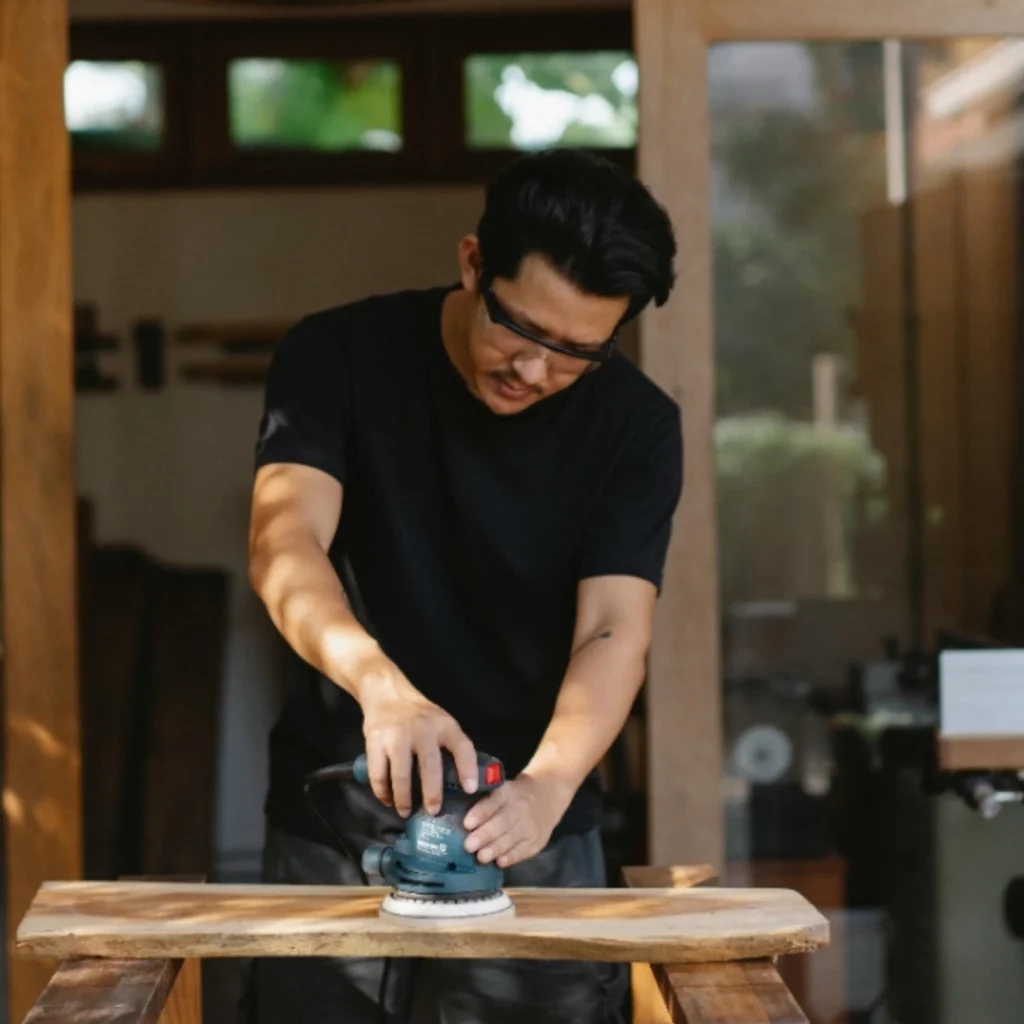Beginning with the Expert Experience A common question that arises among professional and home users during tile installation is: “Can you grind a straight edge tile to mimic pressed”? Before using this technique, it is crucial to understand the differences between rectified tiles, pressed tiles, and straight edge finishes. This article will explain in detail whether the appearance of pressed edges can be achieved through grinding, which techniques are used, and what kind of results can realistically be expected.

Table of Contents
Difference Between Pressed and Rectified Tiles
Pressed Tiles:
These tiles are made by pressing clay and other materials into molds. Their edges are slightly rounded or cushioned, giving a natural and traditional appearance. They usually allow for wider grout lines and are more flexible during installation.
Professional Advice: “If you are interested in home improvement projects, our Home Improvement Section contains the best resources for you.”
Rectified (Straight Edge) Tiles:
These tiles undergo an additional manufacturing process where the edges are mechanically ground to make them perfectly straight. This ensures uniformity in size and allows for thinner grout joints, providing a clean, modern appearance.
Pressed tiles feel soft and natural, while rectified tiles offer a sharp, uniform design. The question arises when someone has straight-edge tiles and wants to soften their appearance—can grinding be used to imitate the pressed style?
Can You Grind a Straight Edge Tile to Mimic Pressed?
The short answer is: Yes, but with some limitations.
Grinding a straight-edge tile can smooth its sharp edges and create a slight curvature or bevel. However, the results will not be as uniform as factory-made pressed tiles because pressed tiles are made by molding under high pressure, giving them a unique finished shape.
Benefits of Grinding:
- A beveled edge that reduces the sharpness of straight-edge tiles.
- A hand-finished appearance that can resemble the cushioned edges of pressed tiles.
- Reducing the risk of chipping during installation or after cutting tiles.
Essential Tools for Grinding Straight Edge Tiles
If the goal is to soften or reshape straight edges, the following tools are essential:
- Diamond Grinding Wheel or Blade: Suitable for ceramic, porcelain, or stone tiles.
- Angle Grinder or Wet Saw: Provides the power and precision required to grind and smooth edges.
- Polishing Pads (Various Grits): To refine the edge after grinding and prevent roughness.
- Safety Gear: Dust mask, safety goggles, and gloves are extremely important for safety.
- Water Supply for Wet Grinding: Helps control dust and prevent the tile from overheating.
Tip: “If you are looking for the best quality furniture for your work, the Altek Drafting Table ACT 36048 is an excellent choice suitable for professional work.”
Step-by-Step Process for Grinding a Straight Edge Tile
- Preparation:
- Clean the tiles thoroughly to remove dust or debris.
- Secure the tile on a flat, stable surface.
- Mark the edges that need grinding.
- Initial Grinding:
- Fit the angle grinder with a diamond blade.
- Hold the grinder at a slight angle (usually 45 degrees) to the tile edge.
- Grind the edge in smooth passes with light pressure to avoid chipping.
- Beveling or Curving:
- For a beveled edge, maintain a constant 45-degree angle.
- For a rounded edge, gradually change the angle while grinding to create a curve.
- Smoothing and Polishing:
- Switch to finer-grit polishing pads or sanding blocks.
- Continue until the edge feels smooth and visually resembles a cushioned finish.
- Cleaning and Sealing:
- Wash the tile thoroughly to remove grinding dust.
- If working with natural stone tiles, consider sealing the edge to protect against moisture absorption.
Limitations of Grinding to Mimic Pressed Tiles
Although grinding is effective for softening straight edges, it has some limitations:
- Not Factory-Standard: Pressed edges are molded, so grinding cannot fully replicate the natural cushioned appearance.
- Time-Consuming: Grinding each tile individually is more labor-intensive than using factory-made pressed tiles.
- Risk of Damage: Incorrect technique can lead to chipping, cracks, or uneven finishes.
- Consistency Challenges: Achieving uniformity across dozens of tiles requires skill and patience.
Note: “If you are interested in modern furniture designs, our complete guide on Glass Table Addicciando will provide you with the best guidance.”
For small projects or when blending cut tiles with pressed ones, grinding is a practical solution. However, for large-scale installations, choosing factory-made pressed tiles may be more effective.
When Should You Grind Straight Edge Tiles?
Grinding is most useful in the following scenarios:
- Smoothing Cut Edges: After cutting tiles with a saw, grinding can soften sharp edges, making them safer and more aesthetically pleasing.
- Custom Finishes: When a soft, handcrafted appearance is desired.
- Matching Pressed Tiles: If only a few tiles need modification to blend with pressed tiles.
- Edge Protection: Around corners, transitions, or exposed tile edges where a sharp line is undesirable.
Alternative Methods to Mimic Pressed Edges
If grinding does not seem practical, consider the following alternatives:
- Tile Edge Trim: Metal or PVC trims can hide sharp edges and provide a professional finish.
- Bullnose Tiles: Specially manufactured with rounded edges, ideal for borders and corners.
- Mitering Technique: Cutting tiles at 45 degrees and joining them can create a softer edge appearance.
- Custom Ordering Pressed Tiles: For larger projects, sourcing pressed tiles directly may be more economical.
Final Verdict: Can Grinding Truly Mimic Pressed Tiles?
Although grinding a straight-edge tile can soften its profile and give it an appearance similar to pressed edges, it will never be a perfect replica. Pressed tiles have natural cushioned edges formed during manufacturing, while grinding produces a manually finished effect.
For minor repairs, custom details, or blending with pressed tiles, grinding is an effective solution. But for larger projects requiring uniformity, choosing tiles manufactured with pressed edges is the best option.
Conclusion
Grinding straight-edge tiles to mimic pressed ones is possible, but it requires the right tools, precision, and patience for work on Can you grind a straight edge tile to mimic pressed. Although the finished surface will not be exactly like factory-made pressed tiles, this technique can soften hard edges and provide a better appearance. For both professionals and DIY enthusiasts, grinding is a valuable skill when dealing with custom tile installations.
Useful Tips for Users:
- Always Wear Safety Gear: Dust and small particles can enter the eyes and respiratory tract during grinding.
- Practice First: Practice on some spare tiles to master the technique.
- Use Quality Tools: Low-quality tools not only make the job difficult but also pose safety risks.
- Be Patient: Rushed grinding can damage the tile.
- Seek Professional Advice: If in doubt, always consult an expert.
If you need any changes or additions, please let us know.


